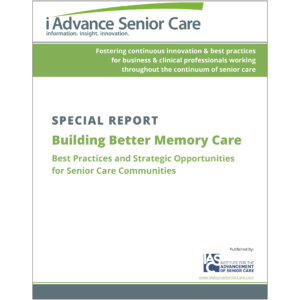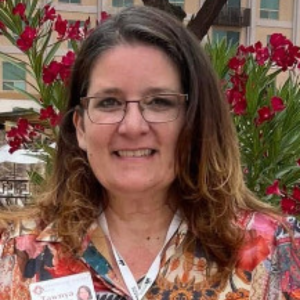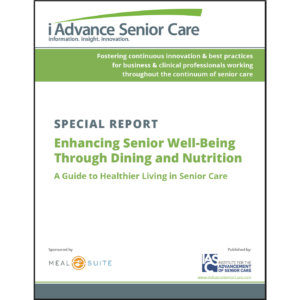2002 Optima Award Winner – The Safety Program: Sunset for Sundowning
| Adapted from the submission by Bortz Health Care of Traverse City, Traverse City, Michigan; written by Debra Hagerty, BS, BSN, MSN, SW, Director of Nurses |
| If you were to ask any professional about the phenomenon of geriatric sundowning-a burst of energy some residents experience at sundown-most could define and describe it without hesitation. It occurs in every nursing home across the country and can create serious resident-care challenges for staff. Some of the consequences of this burst of energy are risks of wandering, falls and aggressive outbursts, all of which could cause serious injury. Our ongoing safety analysis revealed that a high number of such incidents involving our cognitively impaired residents occurred between 6:30 and 8:00 p.m. As a result of this data analysis, our continuous quality improvement team (CQIT) set forth to analyze and prevent this trend from continuing. Planning Initially, we evaluated all incidents occurring within this time period. Commonalities were identified and care plans modified for several residents, but it was clear that a large group of residents involved were experiencing a type of sundowners’ phenomenon, characterized by:
The CQIT reviewed the incidents and the times of their occurrence and concluded that these residents could be sundowning. The team developed a program designed to occupy the attention of these particularly fragile residents at their most vulnerable time of the evening. The program was named, affectionately, “The Safety Program.” All departments were invited to participate in developing program guidelines. Social services assisted with managing behaviors, an experience that provided insight for all staff into management techniques that would promote residents’ dignity and provide them with meaningful life activities. The restorative department provided physical exercise and activities appropriate to the residents’ physical and functional abilities. The activity department was consulted regarding activities and equipment that might be beneficial for cog-nitively impaired individuals. |
|
|
|
|
|
| Goals The goals of The Safety Program were:
Resident Criteria Based on review of the incidents, the following criteria were developed to identify those residents who would be appropriate for this type of programming:
The Safety Program Activities The Safety Program incorporates a variety of games and activities designed to stimulate and entertain the selected residents during this high-risk daily period, under direct supervision of our qualified staff. Some examples of these activities include ball toss, reading out loud, reminiscing and/or validation, coloring, tactile stimulation and music. Program Leadership We chose a competency-evaluated nursing assistant (CENA) as the hands-on leader, under the supervision of a licensed nurse.
|
| Implementation The target date for implementation was January 1, 2001. Before that, extensive training and collaboration involving CENAs and shift nursing took place. Staff were comfortable with the activities/programming planned and were encouraged to make suggestions as issues arose. This project was not without struggles, though. Change is difficult for people. The CENAs felt this was an additional duty. Some staff wanted to skip the program altogether on nights when staffing availability was challenged. It took a while for the staff to become vested in the benefits of the program, but they eventually came to realize its importance in providing environmentally safe solutions for residents who are sundowning, cog-nitively impaired or otherwise at high risk. Once vested, the staff showed intense pride in The Safety Program’s accident prevention record. Our safety team has continued monitoring all new admissions, as well as any resident who experiences a significant change in condition or status. Recommendations from any of our team members regarding residents who might need The Safety Program are taken very seriously. Residents are assessed by the restorative nurse and the unit managers for potential placement. |
| ||||||||||||||||||||||||||||||
| Program Evaluation Our initial findings for the first three months were outstanding: We had a total of 18 incidents between the hours of 6:30 and 8:00 p.m. during that period-a significant decrease from the 26 incidents of the previous quarter. And the results have continued to improve. In year-to-year comparisons, we found that between the first quarter of 2000 and the first quarter of 2001, two fewer incidents occurred-a decrease of 10% (Figure 1). The second quarter of 2001 showed a steep drop in incidents from the second quarter of 2000: 41% (Figure 2). Third quarter 2001 had a 49% decrease in incidents compared to a year earlier (Figure 3), and fourth quarter comparisons of 2000 and 2001 showed a decrease of 58% (Figure 4). Comparing the first quarter of 2000 with that of 2002 disclosed a 61% drop in the number of incidents (Figure 5). To further investigate the program’s effectiveness, we compared the raw numbers of incidents quarter by quarter, year by year (Table). Figure 6 summarizes the program’s results over a two-and-a-quarter-year period. Conclusion
|
|
| Our continuing quality improvement efforts and our incorporation of the Eden principles, as well as input from our staff members, have influenced the programming since its inception. Activities have been modified consistently throughout to meet the individualized needs of an everchanging resident population. We have provided an increase in tactile stim-ulation activities, group activities, pet therapy and other activities appropriate for the cognitively impaired resident. Our Safety Program has increased the quality of life for our at-risk population by decreasing the number of incidents, maintaining and improving residents’ functional levels, and enabling residents at risk to participate in activities especially formatted for them. This program has benefitted the staff and residents with meaningful and improved relationships, increased safety awareness, increased resident satisfaction and significant decreases in the number of incidents, as well as a decrease in the seriousness of incidents that do occur between the hours of 6:30 and 8:00 p.m. Program benefits have surpassed our expectations. NH |
|
| To comment on this article, e-mail hagerty0902@nursinghomesmagazine.com. |
I Advance Senior Care is the industry-leading source for practical, in-depth, business-building, and resident care information for owners, executives, administrators, and directors of nursing at assisted living communities, skilled nursing facilities, post-acute facilities, and continuing care retirement communities. The I Advance Senior Care editorial team and industry experts provide market analysis, strategic direction, policy commentary, clinical best-practices, business management, and technology breakthroughs.
I Advance Senior Care is part of the Institute for the Advancement of Senior Care and published by Plain-English Health Care.
Related Articles
Topics: Articles , Clinical , Facility management











